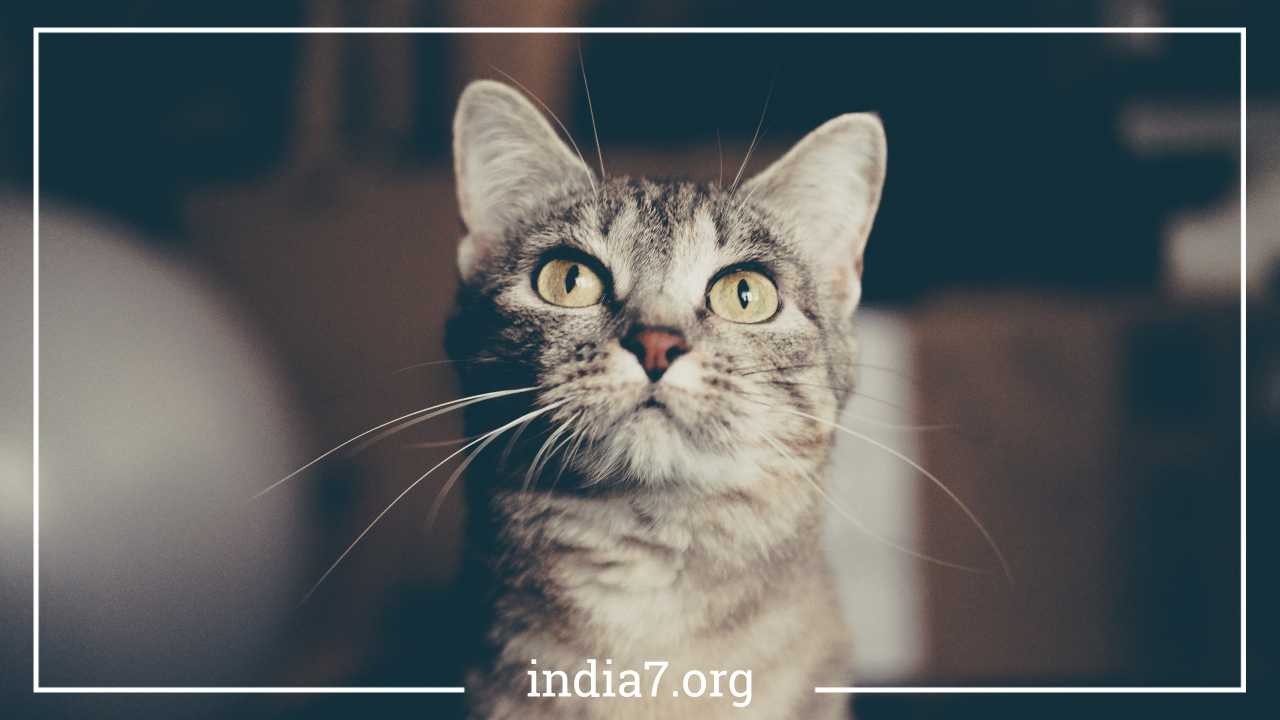Comprehensive Guide to Understanding and Caring for Abused Cats

Abused Cats
Cats, renowned for their independent and often aloof nature, can suffer greatly when subjected to abuse. The mistreatment of cats can manifest in various forms, including physical harm, neglect, or emotional trauma. Understanding the signs, causes, and methods of rehabilitation for abused cats is crucial for their well-being and the enhancement of the human-feline bond. In this comprehensive guide, we will delve deeply into the world of abused cats, exploring their experiences, needs, and ways to provide them with the love and care they deserve.
Recognizing Abuse
Abused cats may display a wide range of physical and behavioral indicators that can vary based on the type and duration of abuse they have endured. It’s important to be aware of these signs to identify and help them effectively.
- Physical Indicators
- Visible Injuries: Cats that have suffered physical abuse may exhibit visible injuries, such as cuts, bruises, or broken bones. These injuries can be observed on their bodies, including limbs, head, or tail.
- Frequent Health Issues: Abused cats may experience recurring health problems, such as infections or chronic pain, due to untreated injuries or stress-induced illnesses.
- Malnourishment: Neglected or abused cats may appear malnourished, with ribs and bones more prominent than normal.
- Poor Grooming: Cats that have endured abuse may neglect their grooming, leading to unkempt fur and the presence of mats or parasites.
- Behavioral Indicators
- Fear and Aggression: Abused cats are often fearful of humans and may react with aggression when approached. This aggression is a defense mechanism developed to protect themselves from further harm.
- Isolation: Abused cats may hide for extended periods, seeking solitude and avoiding human contact.
- Lethargy: Some abused cats become lethargic and lose interest in activities they once enjoyed, including play and social interaction.
- Excessive Vocalization: In certain cases, abused cats may vocalize excessively, either as a sign of distress or an attempt to communicate their needs.
- Emotional Indicators
- Anxiety and Depression: Abused cats can suffer from anxiety and depression, exhibiting withdrawal from their environment and a lack of interest in surroundings.
- Trust Issues: Building trust with an abused cat can be challenging, as they may have experienced betrayal and trauma at the hands of humans.
- Attachment Problems: Abused cats may struggle with forming healthy attachments, making it crucial to offer patient and consistent support.
Types of Abuse
Abuse can take many forms, each impacting cats differently. Understanding these forms of abuse is essential for tailoring rehabilitation efforts.
- Physical Abuse: This includes intentional acts of violence or cruelty toward a cat, such as hitting, kicking, or other forms of physical harm. The visible injuries and physical trauma inflicted can be profound and may require immediate medical attention.
- Neglect: Neglectful abuse involves failing to provide essential care, including food, water, shelter, and veterinary attention. Neglected cats often suffer from malnourishment, illness, and exposure to harsh conditions.
- Emotional Abuse: Emotional abuse encompasses psychological harm inflicted on a cat. Yelling, raising one’s voice, and using disciplinary tools inappropriately can lead to emotional trauma. This form of abuse can be particularly challenging to detect and address.
The Road to Recovery
Rehabilitating abused cats is a delicate and time-consuming process that requires patience, empathy, and a deep understanding of feline behavior. The following steps outline a compassionate approach to help these cats heal and regain trust:
- Create a Safe Environment: Provide a safe, quiet, and secure space for the abused cat to retreat to when they feel overwhelmed. This space should include comfortable bedding, food, water, and a litter box.
- Respect Their Boundaries: Allow the cat to initiate contact and approach you on their terms. Avoid forcing interactions or invading their personal space.
- Use Gentle Treatment: Handle the cat with care, using a soft voice and gentle touch. Never raise your voice or use aggressive disciplinary measures, as this can exacerbate their fear and aggression.
- Build Trust Slowly: Building trust is a gradual process. Let the cat sniff you and become accustomed to your presence before attempting physical contact.
- Positive Reinforcement: Reward desirable behavior with treats and affection. Positive reinforcement can help the cat associate human interaction with positive experiences.
- Companion Cats: In the case of a lethargic cat, introducing a companion cat can provide social stimulation and encourage the abused cat to come out of their shell.
- Consult a Veterinarian: Schedule a thorough veterinary examination to address any physical health issues resulting from abuse. This examination will also ensure the cat’s overall well-being.
- Professional Assistance: If the cat’s emotional trauma is severe, consider seeking the assistance of a professional animal behaviorist or therapist experienced in working with abused animals.
Caring for Emotionally Abused Cats
Emotionally abused cats require special attention and care due to the hidden nature of their trauma. Here are some specific strategies for helping them recover:
- Wait for Their Initiative: Allow the cat to come to you when they feel comfortable. Avoid making sudden movements or loud noises that could startle them.
- Patience is Key: Emotional healing takes time. Be patient and persistent in your efforts to gain the cat’s trust. It may take weeks or even months before they fully open up.
- Soft Voice and Gentle Touch: Always use a soft voice and gentle touch when interacting with emotionally abused cats. This reassures them that you are not a threat.
- Positive Associations: Create positive associations with your presence by offering treats and affection during interactions. Over time, they will come to associate you with comfort and safety.
- Consistency: Maintain a consistent routine and environment to help the cat feel secure. Cats thrive on predictability, and a stable routine can reduce their anxiety.
- Recognize Progress: Celebrate small victories. When the cat starts to show signs of improvement, such as seeking attention or playing, acknowledge and reward their progress.
Caring for Physically Abused Cats
Physically abused cats may require immediate medical attention. Here’s how to approach their care:
- Seek Veterinary Care: Schedule a comprehensive veterinary examination to assess the extent of the cat’s injuries. Address any urgent medical needs, such as wound treatment or surgery.
- Pain Management: Administer pain medication and follow the veterinarian’s recommendations for pain management. Cats in pain can be fearful and aggressive.
- Post-Surgery Care: If surgery is necessary, provide post-operative care, including wound cleaning, antibiotic administration, and a safe, quiet recovery space.
- Long-Term Rehabilitation: Physical rehabilitation for abused cats may involve ongoing medical treatment, physical therapy, and dietary adjustments to support their recovery.
Handling Aggressive or Fearful Cats
Aggressive or fearful cats require specialized handling to ensure safety and encourage positive interactions:
- Stay Calm: Maintain a calm and composed demeanor when dealing with aggressive or fearful cats. Your calmness can help diffuse their anxiety.
- Use a Soft Voice: Always speak in a soft, soothing voice. Avoid sudden movements or gestures that could trigger their aggression.
- Avoid Confrontation: Never try to corner or trap an aggressive cat, as this can escalate their fear and aggression. Provide them with escape routes.
- Professional Help: If the cat’s aggression is severe, consult a professional animal behaviorist or trainer with experience in working with aggressive cats.
The Role of Companionship
Companion animals, especially other cats, can play a significant role in the rehabilitation of abused cats:
- Introducing a Companion Cat: In cases of extreme fear or lethargy, consider introducing a friendly and well-adjusted companion cat. The presence of another cat can provide social stimulation and help the abused cat learn by example.
- Monitoring Interactions: Supervise interactions between the abused cat and their companion to ensure that they are getting along. Gradually, the two cats may form a bond that benefits both of them.
The Healing Process
The healing process for abused cats can be lengthy and challenging, but with patience and dedication, most cats can recover and lead fulfilling lives. Here’s what to expect during the healing journey:
- Setbacks are Normal: It’s common for abused cats to experience setbacks in their progress. These setbacks can be triggered by changes in their environment or interactions.
- Consistency is Key: Maintain a consistent and loving approach, even during setbacks. Reassure the cat that you are a source of comfort and safety.
- Gradual Improvement: Over time, you will notice gradual improvements in the cat’s behavior and overall well-being. Celebrate each milestone, no matter how small.
- Seek Professional Help if Needed: If progress is slow or if the cat’s trauma is severe, do not hesitate to consult a professional animal behaviorist or therapist. They can provide guidance and expertise in managing complex cases.
Providing a Loving Home
Abused cats deserve a loving and nurturing home environment where they can heal and thrive. Here are some tips for creating a supportive home for these cats:
- Safety Measures: Cat-proof your home to ensure the cat’s safety. Remove potential hazards, such as toxic plants or chemicals, and secure windows and balconies.
- Create a Safe Space: Designate a quiet and comfortable space where the cat can retreat when they need solitude. Provide essential amenities, including food, water, and a litter box.
- Interactive Toys: Offer a variety of toys and activities to engage the cat mentally and physically. Interactive toys and puzzle feeders can be particularly beneficial.
- Routine and Predictability: Establish a daily routine that includes regular feeding times, play sessions, and grooming. Cats thrive on predictability and routine.
- Regular Veterinary Care: Schedule regular check-ups with a veterinarian to monitor the cat’s physical and emotional well-being. Preventive care is essential for their long-term health.
- Socialization: Gradually introduce the cat to other family members and pets in a controlled manner. Supervise interactions until you are confident that the cat can coexist peacefully with others.
Final Remarks
Caring for abused cats is a deeply rewarding but challenging endeavor that requires unwavering dedication, compassion, and patience. Recognizing the signs of abuse, understanding the different forms of mistreatment, and tailoring your approach to the cat’s unique needs are key steps in their rehabilitation. With time and a loving environment, abused cats can heal, regain their trust in humans, and thrive as cherished members of your family. Always remember that gentleness and patience are paramount when helping these cats on their journey to recovery.



